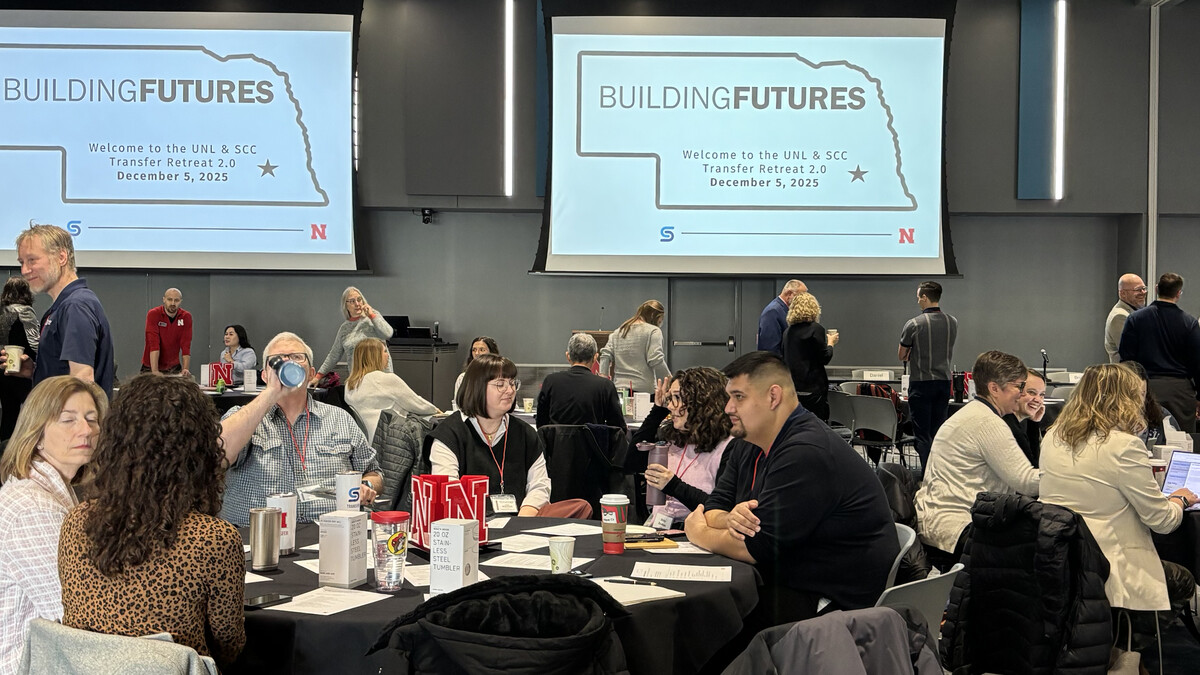
University of Nebraska–Lincoln researchers are closely examining the social, health and mortality effects of COVID-19 among older marginalized populations.
It is well-documented that COVID-19’s most deleterious impacts have been felt by older adults, but what does that mean for minority populations? Their social networks? Their overall mortality?
Marc A. Garcia and colleagues in the Department of Sociology and the Institute of Ethnic Studies are exploring these questions and have published new research to share their findings.

Structural racism exacerbates negative outcomes
One of Garcia’s articles, “The Color of COVID-19: Structural Racism and the Pandemic’s Disproportionate Impact on Older Racial and Ethnic Minorities,” published in The Journals of Gerontology: Series B, drew on current events, existing literature and data sources, including the Centers for Disease Control and Prevention and the United States Bureau of Labor Statistics.
The study’s authors found that the COVID-19 death rate among Black adults age 65 and older is approximately three times higher than the death rate among whites in the same age group. Similarly, Latinx adults age 65 and older had a death rate two times higher than their white counterparts.
Garcia and the co-authors wrote that structural racism and inequalities are driving the large differences between white and minority COVID-19 outcomes.
“Structural racism is a fundamental cause of health disparities in the United States,” Garcia said. “it operates through multiple domains — (the) criminal justice system, education, employment, housing and healthcare — to create systems of inequality that harm the health of minority and immigrant groups.”
The article noted that Black and Latinx individuals have a higher risk of exposure. They often live in areas that are more densely populated and have concentrated economic disadvantage, high crime rates, fewer health food options and green spaces, and subpar housing. These conditions make it difficult to practice preventative measures like distancing. Additionally, occupational segregation has played a role, as Black and Latinx people are overrepresented in high-contact and low-wage jobs.
They also lack access to quality health care, partly due to the occupational segregation, as many high-contact and low-wage jobs don’t offer high-quality health insurance. Also impacting access to health care are residential segregation, which puts the majority of older Black adults in the worst hospitals, and physician bias.
Minority populations also have a greater chronic disease burden, in which structural racism also plays a role. Past research has shown that racism and related stressors increase activity in the sympathetic nervous system, raising stress hormone and blood pressure levels, for example.
Catherine Garcia, assistant professor of sociology at Nebraska, and researchers at Florida State University and Duke University co-authored this study.
COVID-19 disproportionately impacting older Latinos
Marc Garcia co-authored an additional study using CDC data to assess the impact of COVID-19 on older Latino mortality, compared to white and Black adults within the same age groups.
The article, “The Disproportionate Impact of COVID-19 on Older Latino Mortality: The Rapidly Diminishing Latino Paradox,” published in The Journals of Gerontology: Series B, explored how COVID-19 is impacting the Latino Paradox — the phenomenon of U.S. Latinos experiencing greater longevity and lower all-cause mortality than whites in the same age groups, despite poorer socioeconomic status.
The Latino Paradox has persisted for more than 30 years. However, COVID-19 has rapidly and substantially eroded the Latino mortality advantage. Garcia found that Latinos have significantly higher death rates from COVID-19 than whites in the same age groups. He also found that the Latino advantage for total deaths persists, but it is significantly less compared to the pre-pandemic period he studied.
For example, in the 55- to 64-year-old group, Latinos have a mortality rate that is 6.1 times higher than whites. The rate is 4.5 times higher in the 65- to 74-year-old category, and 2.9 times higher in ages 75-84. Across the same four age categories, non-COVID-19 death rates are about one-fifth lower than whites and two-fifths lower than Blacks.
The results demonstrate that generally, Latinos have lower mortality than their white and Black counterparts, but that COVID-19 has erased the mortality advantage among Latinos between the ages of 65 and 74 years old.
Garcia and co-author Rogelio Saenz of the University of Texas at San Antonio argue that structural racism has put Latinos at greater risk for chronic health conditions and co-morbidities in later life, which play a role in the outcomes of COVID-19, including long-term health consequences and death.
Social networks weakened by disaster
Garcia joined fellow Nebraska sociologists G. Robin Gauthier, Jeffrey Smith and Catherine Garcia to analyze past literature on racial and ethnic disparities in social networks, as well as how those social networks have been negatively impacted by disasters. The researchers also documented pre-pandemic disparities in social network resources.
The meta-analysis, “Exacerbating Inequalities: Social Networks, Racial/Ethnic Disparities, and the COVID-19 Pandemic in the United States,” also published in The Journals of Gerontology: Series B.
Strong social networks have a positive effect on physical and mental health outcomes, the authors wrote, but during times of crisis, access to these social resources is disrupted, especially among older adults and particularly for marginalized groups.
For example, survivors lost 1.5 network members during Hurricane Katrina, according to a 2009 study. Research has also shown that prior to the pandemic, Black and Latinx adults had smaller social networks and were at higher risk for social isolation. The disproportionate number of COVID-19 deaths among Black and Latinx populations will exacerbate these disparities in network size, the researchers wrote, in turn increasing social isolation.







